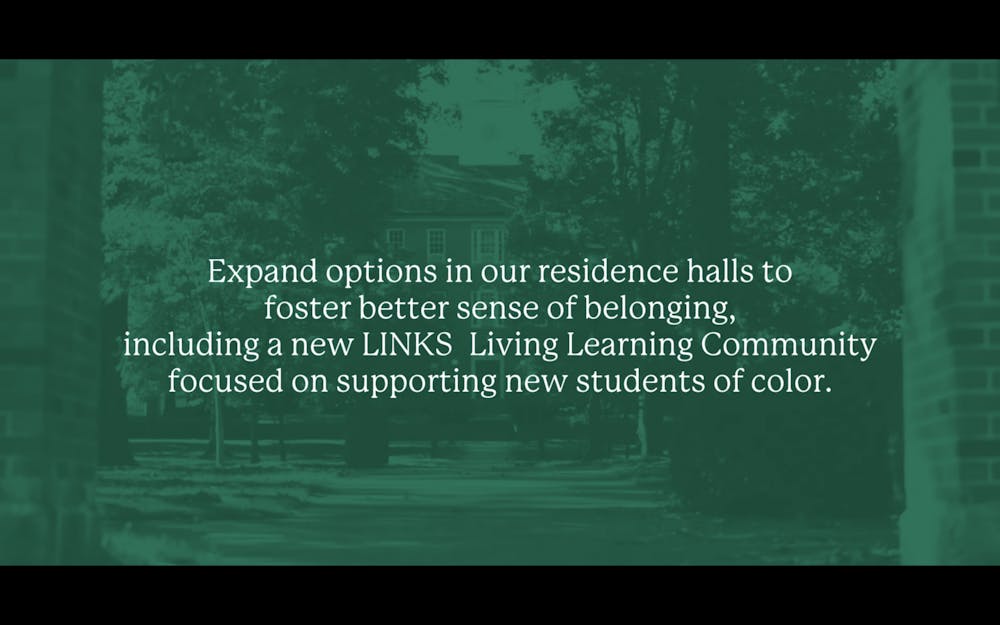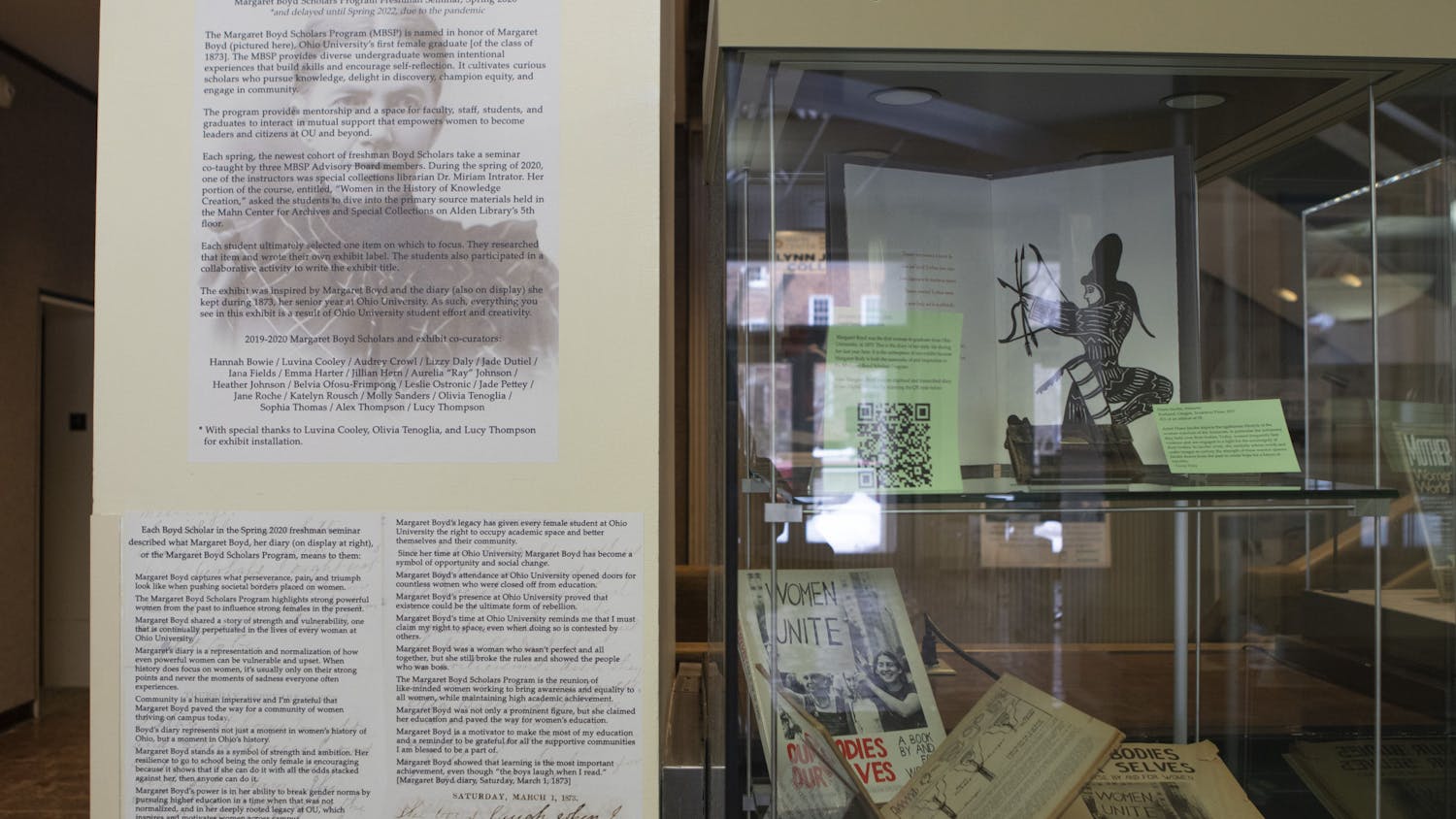A new living opportunity for students in the LINKS program at Ohio University will be available for the 2022 fall semester. LINKS is a support program for incoming multicultural students and runs through the Office for Multicultural Success and Retention, or OMSAR.
The new experience, called the LINKS Experiential Living Opportunity, or ELO, allows first year students in LINKS to choose if they want to live on the second floor of Perkins Hall on East Green. Students in LINKS have been receiving information about the ELO and when access to join will be available, the assistant director of peer mentor programs for OMSAR, Alison Moore, said. Moore also said students in LINKS can select into these rooms starting on May 18 through the housing portal.
The LINKS ELO started as an idea back in 2020. Moore said initial discussions about the ELO began with senior peer mentors in LINKS during the height of the pandemic. After students in LINKS complete their first year in school at OU, they can apply to become peer mentors in the program to continue the support of incoming students.
“We were all remote and just talking with them, looking at restructuring our LINKS program and what things they wish they would have had as a first year student,” Moore said. “And one thing that kept coming up was having either a residence hall or living together in a residence hall with other multicultural students or students of color would have been really beneficial to them as a way of developing that sense of community.”
Moore was also aware of different ELOs other university programs provide. Currently, there’s a LGBT ELO for identifying students, a substance free ELO for students committed to living in an environment without alcohol or drugs, a women’s leadership ELO for women students exclusively and an ELO called Building up Bobcats for students interested in leadership and community engagement.
Housing and Residential Life showed Moore different residential halls that would be the best fit for the LINKS ELO. Perkins has 25 rooms on the second floor and Moore said they might add the third floor to the ELO if more students intend to join. The residential adviser or multiple advisers will be LINKS students. The ELO also includes an experiential learning piece.
“We’ve developed certain programming that we can do in the residence hall,” Moore said. “When our students move in, they’re moving in the first move in time so they’ll be moving in on Thursday, Aug. 11, between 8 (a.m.) and 11 (a.m.) and our peer mentors will be helping with Bobcat Moving Crew. Our staff will be there to welcome the students and parents.”
There will be a gathering in the evening after everyone is moved in with pizza and discussions about the programming for the LINKS ELO. Moore said one of the goals is to make everyone feel comfortable in their living environments and after that they will help students find organizations and programs they may be interested in joining.
The opportunity presents itself as a way for students to find other students with similar backgrounds and build relationships from that. Sallu Timbo, a recent OU graduate and former LINKS student, sees the benefits and the possible challenges of the LINKS ELO.
“I kind of see where OMSAR and the diversity and inclusion committee at OU (are) thinking about what this would do for the university,” Timbo said. “Typically, these OMSAR students are first generation so just having that community I feel would be nice.”
Timbo also initially thought that the ELO would separate LINKS students from the rest of campus. However, he understands the impact the pandemic had on the university makes connecting with other students difficult.
“When I was a freshman in OMSAR and LINKS, I was given plenty of opportunities to communicate with those in the same program,” Timbo said. “I became close friends with many of them. And I didn’t even live in the same building as them. That community will always be there and it just needs time to rebuild. I feel like it’s a way to make it rebuild faster, but also (it) could slow down that entire rebuild process. And kind of exclude everybody else from the other people on campus.”
LINKS used to be an opt-out program, according to Reagan Newton, a senior studying biological sciences pre-professional and a peer mentor for the program. Multicultural students were automatically placed in the program and they could choose to leave or stay after the fact. Newton said he initially thought the LINKS ELO makes sense as a plan because of the racist hate crimes that were committed by students in two residence halls last semester.
“I think that having a space that hopefully will be a lot safer is definitely a good thing,” Newton said.
Newton also said it’s important to recognize that not every multicultural student has the same experience, which makes it also important to have the LINKS ELO be a choice for students in the program.
During the town hall led by Black students at OU following the hate crimes, some students requested there to be residential halls for Black students and students of color to live in.
When students live in residential halls their freshmen and sophomore years, Moore said most probably want to live in safe and comfortable environments. If college is a time to discover one’s passions and life-long friends, students’ home away from home can’t be discriminatory against cultural backgrounds.
“It’s something we’re hearing across campus from other students that they feel that having that affinity housing for multicultural students is really important for them to build community which leads to a sense of belonging at Ohio University, '' Moore said. “And let’s be honest, everybody wants to feel that they belong here, and those students do belong here.”






